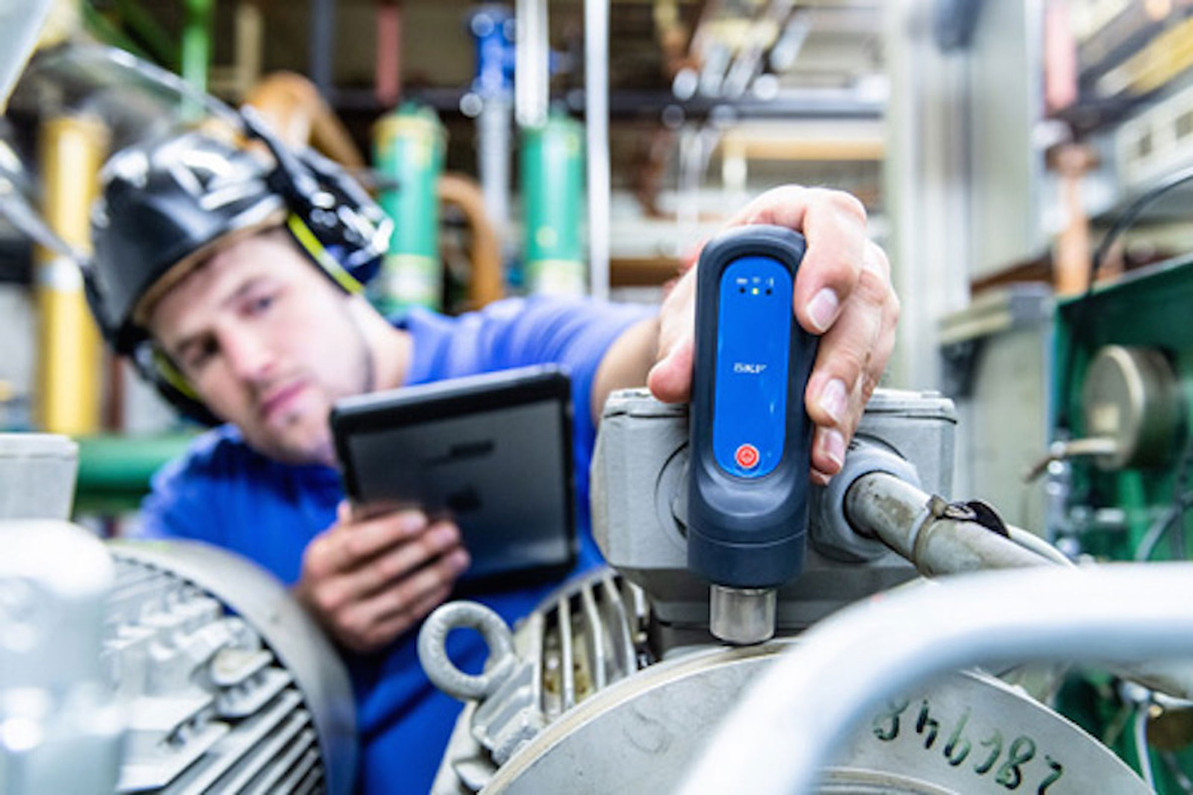How To Correctly Mount and Dismount Bearings
Mounting and dismounting a bearing is an essential procedure, which involves certain tools and techniques needed to correctly install and remove bearings.
It is vital that a bearing is mounted correctly. Using the wrong techniques can significantly reduce your bearing's service life, leading to bearing damage and failure and, in turn, costing more time and money through unplanned downtime and replacing the bearing or even damaged equipment.
Did you know that around 16%* of all premature bearing failures are caused by poor fitting? (SKF)
How To Mount Bearings Correctly?
Mounting a bearing is a critical stage of the bearing’s lifecycle. Using specialized tools maximizes the chances of success and the bearing’s service life. The three main types of tools you can use are:
- Mechanical
- Hydraulic
- Heat
At Quality Bearings Online we stock a wide range of tools to aid in mounting bearings, all of which have been designed to prevent damage to the bearing and shaft/housing, and to maximize your machine’s performance and running time. All our tools are from industry leader SKF, ensuring you receive reliable and efficient, high-quality products.
As we’ve mentioned, there are a lot of methods to avoid when it comes to fitting bearings, so to help, here are some of the correct methods you can use instead. Rather than using a hammer and pipe, try our Bearing Fitting Tool kit from SKF. The kit's impact ring and sleeve combinations allow for even distribution of the mounting force to the bearing ring, while the dead-blow hammer controls the strike with minimal rebound preventing injury to the fitter.
Mechanical Bearing Mounting Tools:
Mechanical tools, such as hammers, provide a straightforward approach to mounting bearings onto shafts. While simple in concept, these tools require precision and care to avoid damaging the bearing, shaft, or housing. Proper selection and usage of mechanical tools ensure a secure and effective mounting process, enhancing the longevity and performance of the bearing assembly.
Heating Tools for Bearing Mounting:
Heating tools are indispensable for mounting cylindrical roller bearings or bearings on cylindrical seats. Aluminum heating rings or induction heaters selectively heat the inner ring of the bearing, facilitating easier installation onto the shaft. This method not only ensures a secure fit but also protects the shaft from damage during frequent dismounting, common in applications involving cylindrical roller bearings.
Proper use of heating tools guarantees a smooth and efficient mounting process, optimizing the performance and longevity of the bearing assembly.
Hydraulic Bearing Mounting Tools:
Hydraulic methods offer a robust solution for mounting larger and heavier bearings onto shafts like spherical roller bearings. Utilizing hydraulic pumps, nuts, and oil injectors, these tools allow for the application of significant forces with controlled precision. Hydraulic mounting minimizes manual effort and reduces the risk of damage to the bearing, shaft, or housing, ensuring a reliable and durable assembly.
Tapered Seat Bearings:
For bearings with a tapered seat, mechanical methods can’t exert the amount of force needed for the correct fit. Instead, hydraulic tools, like a Hydraulic Pump with a Hydraulic Nut, make mounting these bearings quicker, easier, and more accurate.
Instead of oil baths and blowtorches, SKF has a line of Induction Heaters, a safe and controlled way to heat bearings quickly, and efficiently.
All of these tools and kits ensure that your bearings are mounted correctly and without any damage sustained to the bearing or the machine.
How To Remove Bearings?
Every bearing has a service life that eventually comes to an end and the bearing needs to be replaced. If the bearing is not removed correctly, it could cause damage to the housing, shaft, or machinery, creating even more cost and can even be hazardous to the fitter. As such, much like when mounting the bearing, dismounting requires the correct tools and techniques to ensure success

Different Types Of Bearing Dismounting Methods
Various tools such as hammers, hydraulic dismounting tools, and heating tools are employed for the dismounting of bearings. Each method offers distinct advantages in terms of safety, control, and minimizing damage to the bearing, shaft, and housing, find out more below.
Mechanical Dismounting Tools
Hammers, as we talked about earlier, are often a popular choice when it’s time to dismount a bearing from the shaft. The use of the correct tool is safer and less damaging to the bearing, shaft, and housing or seat.
Hydraulic Dismounting Tools
Hydraulic methods are ideal for dismounting larger, heavier bearings and involve using hydraulic pumps, nuts, and oil injectors. These tools allow significant forces to be applied with more control, less manual effort, and lower risk of damage.
Heating Tools For Dismounting
Heating tools are used to dismount Cylindrical Roller Bearings or bearings on a cylindrical (parallel) seat. Aluminum Heating Rings or Induction Heaters only heat the inner ring of the bearing. This method protects the shaft from damage during frequent dismounting, which is common with cylindrical roller bearings and their various applications.
Bearing Maintenance
It’s reported that manufacturers alone experience about 800 hours of machine downtime per year, costing the industry a whopping $260K per hour. (Pingdom)
Run to Fail and Preventive Maintenance end up costing more both financially and in wasted time in the long run. Therefore, checking the condition of your machinery during operation is the best thing you can do for the performance of machinery and to reduce downtime. Checking the condition of your machines while in operation is known as Predictive Maintenance. This is the most efficient and economical maintenance plan as it monitors the condition and running of your equipment and gathers data to anticipate problems, alerting you as they arise before they can become failures. But what should you be looking for in Predictive Maintenance?
Below, we’ve listed the main things you should be monitoring:
- Temperature - It is universally understood that abnormal temperatures indicate a problem in a machine. SKF has a range of highly accurate thermometers with probes and/or laser targeting for various applications.
- Sound - In the same vein, abnormal sounds indicate something is wrong. Stethoscopes and Ultrasonic Leak Detectors can pinpoint and identify the problem, allowing repairs to be made before extreme noise can become damaging to workers.
- Electrical Discharge Currents - Not something you can feel or hear, electrical discharges occur when voltages from motor shafts are discharged to earth through the bearing, causing lubricant degradation, electrical erosion, and bearing failure. The TKED 1 Electrical Discharge Pen from SKFis a simple handheld instrument that detects electrical discharge currents so action can be taken.
- Vibration- Often the first indication of a possible machine failure, abnormal vibrations can cause misalignment, loose parts, and bearing rolling element and gear damage. The SKF QuickCollect Sensor combines vibration and temperature sensing for quick, real-time, or future analysis using cloud services. It also connects you with expert advice via the SKF Remote Diagnostic Services so you can identify issues before they become larger problems.
Mounting and Dismounting Techniques to Avoid
Choosing the correct mounting technique for your bearing helps mitigate the risk of premature bearing failure, as well as extra costs from resulting damage to your equipment. You can bypass premature bearing failures due to mounting by simply avoiding the following:
- Using brute force or shock loading. The hammer and pipe cold mounting method is a classic, however, it can cause fractures and cracks in the inner ring, making your bearing unusable.
- Using force against the wrong ring. This can cause the balls and/or raceways to become indented, known as 'brinelling', making the bearing unusable which therefore leads to failures.
- Using oil baths and blowtorches. Oil bathscan contaminate the bearing and make monitoring the bearing's temperature difficult. Likewise, a blowtorch can burn at incredibly high temperatures and compromise the bearing's components.
Bearing mounting and dismounting can be challenging, but having a clear understanding of the appropriate methods for your bearings is key in ensuring the longest possible service life and reducing unplanned downtime. You may also want to hear about the benefits of rubber seals vs metal shielded bearings.
Here at Quality Bearings Online, we stock a wide range of maintenance tools from industry leading manufacturer, SKF. We pride ourselves on our range of services such as fast worldwide delivery and excellent customer service. If you wish to find further information about any of our products or services, our expert sales team are on hand to answer any of your queries. Contact Us today.
*All images used in this blog are owned by SKF Group.
Contact Us
Recent Posts
-
Our Commitment to our US Customers
At Quality Bearings Online, our customers are at the heart of everything we do. Whether you're …16th Apr 2025 -
The Ultimate Guide to High-Performance CNC Machine Bearings
CNC machine bearings are mechanical components designed to minimize friction between moving par …3rd Apr 2025 -
Quality Bearings Online Awarded Independent Seal Of Excellence
For the fourth consecutive year, we’re thrilled to have won the Feefo Platinum Trusted Service …12th Mar 2025
























